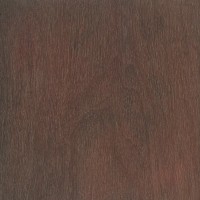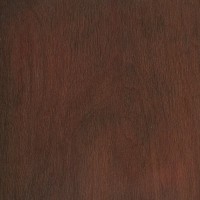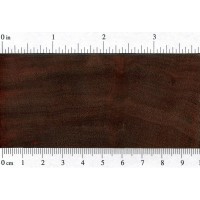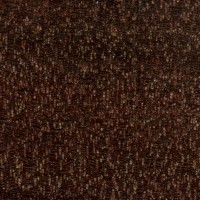 |
Common Name(s): Chico Zapote, Zapote, Sapodilla Scientific Name: Manilkara zapota Distribution: Southern Mexico and Central America Tree Size: 65-100 ft (20-30 m) tall, 2-3 ft (.6-1 m) trunk diameter Average Dried Weight: 65 lbs/ft3 (1,040 kg/m3) Specific Gravity (Basic, 12% MC): .82, 1.04 Janka Hardness: 2,970 lbf (13,210 N) Modulus of Rupture: 26,710 lbf/in2 (184.2 MPa) Elastic Modulus: 2,960,000 lbf/in2 (20.41 GPa) Crushing Strength: 12,440 lbf/in2 (85.8 MPa) Shrinkage: Radial: 6.2%, Tangential: 9.2%, Volumetric: 16.0%, T/R Ratio: 1.5 |
Color/Appearance: Color ranges from a pink or red to a darker reddish brown. Pale yellowish sapwood gradually transitions to heartwood. Gum pockets are commonly found in this wood.
Grain/Texture: Grain is straight (or occasionally wavy) with a medium to fine uniform texture.
Endgrain: Diffuse-porous; medium-small pores in no specific arrangement; commonly in radial multiples of 2-6; gums and other heartwood deposits present; growth rings indistinct; rays not visible without lens; parenchyma banded (numerous fine bands).
Rot Resistance: Reported to have outstanding durability and insect resistance. (Intact Chico Zapote beams have been found amid the ruins of Mayan temples.)
Workability: Checking is common with this species, and even turning blanks are sometimes sold dry instead of green. Can be difficult to work on account of its density, but generally produces good results. Moderate blunting effect on cutters. Turns and finishes well.
Odor: No characteristic odor.
Allergies/Toxicity: Although severe reactions are quite uncommon, Chico Zapote has been reported to cause respiratory (nasal) irritation. See the articles Wood Allergies and Toxicity and Wood Dust Safety for more information.
Pricing/Availability: Chico Zapote is a fruit tree, and isn’t usually harvested for lumber. Occasionally available, it should be moderately priced for an imported wood.
Sustainability: This wood species is not listed in the CITES Appendices or on the IUCN Red List of Threatened Species.
Common Uses: Cabinetry, furniture, archery bows, flooring, turned objects, and other small specialty wood items.
Comments: This gum of the tree’s bark is used for chewing gum and other candies, and the tree is primarily known for its fruit, not its lumber. The tree is usually called Sapodilla.
None available.








I brought some small pieces home with me from Guatemala and have cut 6-32 threads in it and it holds well but of course I’m not putting a great deal of pressure on them. To thread holes, wood or metal, I always secure the object with a bed vice on the drill press table and put the tap in the chuck and turn it by hand while keeping slight down pressure with the quill. I do have to wear a mask.
Any issues anyone can think of using Sapodilla wood for tobacco pipe making?
A good rule of thumb for pipe wood selection is that if it bears fruit you can eat then you should be fine. Also, woods that are typically used to make bowls or utensils will also be fine to use for pipe making. Just make sure you double check every wood before experimenting. On this species, I believe you’ll be just fine though. I’m currently making a stem for a pipe with this wood. Also making a tamper/scraper pipe tool with this wood.
If properly sealed, could it be used for food prep? As in cutting boards. I live in Yucatán and love turning this wood. Used in counter tops throughout our home.
I am in Merida and use it for cutting boards, no problema. I seal it with mineral oil, bought at Emerita Famacia and local beeswax. I have our home bar with it. extremely hard and the sawdust is an irritant. Max
Hi Max. Steve here in Chelem. I turn this stuff a lot. Always with mask and goggles. The dust toxicity reminds me of the mesquite I used to work with in Texas. Glad to hear you’ve had success using it for cutting boards. Always thought it would be good. Hope to meet you in person one day.
can i use sapodilla for smoking meat?
As an addendum, I live in the Yucatan, where this tree is native.
I am also in Yucatan and am making a bar with it. bought from the mill at 45 pesos per bd. ft. Not sawn with precision nor planed well. But I love it. Do you have any idea of how much seasonal movement to expect?
I’m thinking of using it underwater, in a natural pond. Does it leach anything toxic to water plants?
this is the best wood in the world as the mayans dicoverd. pices very well worked by the mayans have been recoverd in the mud of more than a thosand year old door dintels from mayan ruins. very beautiful
I’m looking to make the case that this timber is very very strong and durable. It rest decay and penetration from insects. It can last hundreds of years. Can anyone refer me to a source of information.
Just started to turn a bowl out of Zapote and felt like I was back in the gas chamber during basic training! My nose began running like crazy and I coughed uncontrollably! Blew my nose a few times and went outside for some fresh air and all is fine now!
Never had any problems with any other woods so went on-line to check it out and found that it could be an irritant; certainly is for me! I’ll be wearing a mask from now on for this piece!
You should always wear a mask and goggles when woodworking. I have a friend who has an auto immune disease cuz he didn’t wear his mask all the time and he regrets it more than anything.
Janka Hardness: 2,870. not 2970 lbf
There’s always the freak chance that someone will have a severe allergic reaction, but that’s true of pretty much all woods. If it were me, I wouldn’t worry about using the wood.
Can you use Sapote as a butcher block…a food prep board?
My carpenter cut and sanded a piece of Sapote and I cured it with coconut oil. I’m concerned about whether it is safe to put food on it.
thanks for your help,
Linda
Yes. We use it for posts mai,ly, but have made spoons and serving knives with it, without issue.